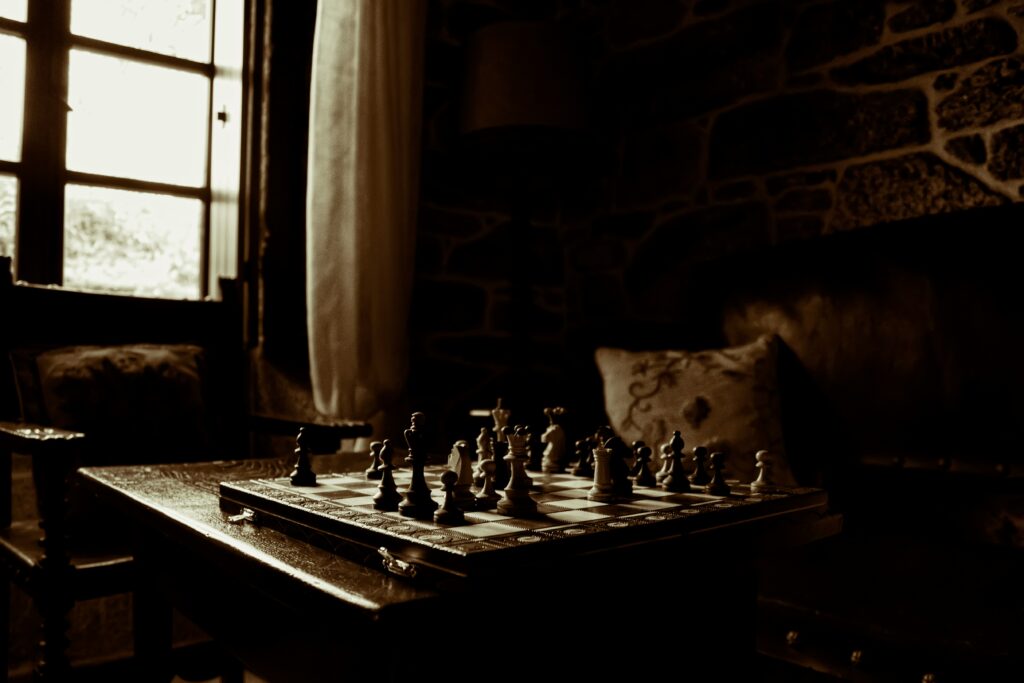The chessboard is more than just a game accessory; it is the battlefield where strategy, intellect, and skill converge in the timeless game of chess. This iconic board, with its 64 squares and alternating colors, serves as the foundation for one of the most celebrated games in history. Understanding the chessboard’s design and its role in the game is essential for both beginners and seasoned players.
Design and Structure of the Chessboard
Layout and Dimensions
A standard chessboard is an 8×8 grid, totaling 64 squares.The chessboard features alternating colors for each square, typically black and white, though other color schemes also appear. The board remains square-shaped, and each square measures the same size to ensure uniformity and fairness in the game.
The orientation of the chessboard is crucial. The bottom-right square for each player should always be a white (or light) square. This setup ensures that the pieces are correctly positioned at the beginning of the game.
Materials and Varieties
Chessboards come in various materials, including wood, plastic, glass, and metal. Traditional wooden chessboards, often made from high-quality hardwoods like maple or walnut, are valued for their aesthetic appeal and durability. Modern chessboards might use materials like tempered glass or high-density plastic for affordability and practicality. Each material can offer a different tactile experience and visual appeal, catering to different preferences and settings.
Setting Up the Chessboard
Initial Arrangement
At the start of a chess game, players set up their pieces on the two rows closest to them. They arrange the pieces as follows:
- Rooks: Placed on the corners of the board.
- Knights: Positioned next to the rooks.
- Bishops: Placed next to the knights.
- Queen: Positioned on the square that matches her color (white queen on white square, black queen on black square).
- King: Placed on the remaining square next to the queen.
- Pawns: Positioned in a row in front of the other pieces.
This setup ensures that each player starts with the same piece configuration, providing a balanced start to the game.
The Role of the Chessboard in Gameplay
The chessboard serves as more than just a platform for pieces; it is integral to the strategic depth of the game. The arrangement of squares creates an environment where piece movements and strategies unfold. Each square has a specific coordinate (e.g., e4, d5) that players use to communicate moves and strategize.
Chessboard Variations
Thematic Chessboards
Thematic chessboards are designed to reflect various themes or aesthetics. These boards might feature unique designs or motifs, such as historical, fantasy, or pop culture themes. While they serve the same functional purpose, they add a personal or artistic touch to the game.
Chessboard Sizes and Shapes
While the standard chessboard is 8×8, variations exist for different types of chess games or puzzle challenges. For example, chess960, or Fischer Random Chess, uses the same 8×8 board but with a randomized piece setup. There are also larger chessboards used for variants of chess, like 10×10 or 12×12 boards for chess variants like Capablanca Chess.
Care and Maintenance of Chessboards
Cleaning and Storage
The care of a chessboard depends on its material. Regularly dust wooden boards and treat them with appropriate wood care products. Clean plastic and metal boards with a damp cloth and mild detergent. Proper storage in a dry, cool place can prevent warping or damage.
Preserving Value
For high-quality or antique chessboards, proper preservation techniques are essential. Keeping the board in a protective case or covering it when not in use helps maintain its condition. Regular maintenance and handling with care ensure that the board remains in good condition for future generations.
The Cultural and Historical Significance
Chessboard in History
The chessboard has a rich history dating back to the origins of chess, which traces its roots to ancient India and Persia. The design of the chessboard has evolved over centuries, reflecting changes in cultural and artistic styles. Its role in chess history underscores its importance as the stage for one of humanity’s greatest intellectual pursuits.
Chessboard in Modern Culture
In contemporary times, the chessboard continues to hold cultural significance. It is featured in literature, films, and art as a symbol of strategy, intelligence, and competition. The chessboard’s iconic status transcends its role in the game, making it a recognizable and respected object in various contexts.
Conclusion: The Chessboard as a Timeless Icon
The chessboard is far more than a simple game accessory; it is a fundamental component that shapes the experience of chess. Its design, material, and setup are crucial for understanding and enjoying the game. As both a practical tool and a cultural symbol, the chessboard embodies the enduring appeal of chess and its place in human history.
Whether you’re a novice or a grandmaster, appreciating the chessboard’s role and history adds depth to your understanding of this classic game. The chessboard remains a testament to the elegance and complexity of chess, standing as a timeless icon in the world of strategy and intellect.
This article explores the significance of the chessboard, providing detailed insights into its design, setup, and role in the game of chess, while also touching on its cultural and historical importance.


